($15, Ex Cellars Wine Agency): This is the kind of Bordeaux that everyone loves to find because it delivers more than either the price or the appellation suggests. Château Recougne, one of the key properties of the talented Milhade family, is located near Pomerol on the right bank of Bordeaux’s Gironde River. … Read more
Category Archives: Reviews
Torres, Catalunya (Spain) “Sangre de Toro” 2007
($9, Dreyfus, Ashby & Co.): With their portfolio of wines, the Torres family has shown the world the incredible quality and value of Spanish wines. This mid-weight blend of Garnacha (2/3rds) and Cariñena delivers far more complexity and nuance than the price suggests. … Read more
Château d’Esclans, Côtes de Provence (Provence, France) Rosé “Whispering Angel” 2009
($21, Shaw Ross): Sacha Lichine, son of renowned Alexis Lichine, the larger than life wine-merchant, author and Bordeaux château owner, has forsaken the family’s traditional home base (Bordeaux) for sunny Provence where he aims to make the best rosé in the world at Château d’Esclans. … Read more
Château d’Esclans, Côtes de Provence (Provence, France) Rosé “Garrus” 2008
($109, Shaw Ross): You read it correctly, over $100 a bottle for rosé. At Château d’Esclans, Sacha Lichine is aiming to take rosé to a new quality–and price–level. A blend of roughly 2/3rds Grenache, exclusively from 80-year-old vines, and Rolle from similarly aged vines, the Garrus is a selection from the very best vineyards on the estate. … Read more
Mohua, Central Otago (New Zealand) Pinot Gris 2009
($18, Vineyard Brands): 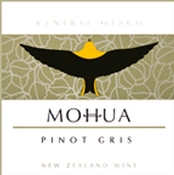 The Central Otago area on New Zealand’s South Island is well known for its superb Pinot Noir. After tasting this wine, you can add Pinot Gris to its list of successful varietals. With good weight and pear-like notes, this New Zealand beauty is clearly in the Pinot Gris–as opposed to the Pinot Grigio–style of the varietal. … Read more
The Central Otago area on New Zealand’s South Island is well known for its superb Pinot Noir. After tasting this wine, you can add Pinot Gris to its list of successful varietals. With good weight and pear-like notes, this New Zealand beauty is clearly in the Pinot Gris–as opposed to the Pinot Grigio–style of the varietal. … Read more
Torres, Central Valley (Chile) Cabernet Sauvignon Reserve “Las Mulas” 2008
($10, Dreyfus, Ashby & Co.): Torres, the iconic Spanish wine family, once again was ahead of the curve when they started their outpost in Chile in 1979. (Their website claims they were the first foreign wine company to invest there). This 100% Cabernet Sauvignon, from organically grown grapes, conveys gorgeous intensity without heaviness. … Read more
Goldwater Estate, Wairau Valley (Marlborough, New Zealand) Sauvignon Blanc 2008
($14, Pasternak Wine Imports): The justified popularity of Marlborough Sauvignon Blanc has spawned some pretty vapid examples of the category, especially at the lower price levels. But don’t let the price of this one make you suspicious. Rather, stock up, because it shows why the category is so popular. … Read more
Weingut Willi Bründlmayer, Kamptal (Austria) Riesling Heiligenstein Alte Reben 2008
($50, Skurnik): Heiligenstein, located in the village of Zöbinger, is one of Austria’s most acclaimed vineyards. Bründlmayer is one Austria’s best producers. Combine the two and throw in old vines (Alte Reben) and it’s no surprise about the extraordinary quality and distinctiveness of this wine. … Read more
Shaya, Rueda (Castilla y Leon, Spain) 2009
($15, Jorge Ordonez): Rueda, a small D.O. in northern Spain, remains under-appreciated as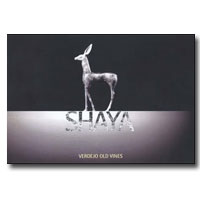 a source for reasonably priced vibrant white wines. This one, made entirely from Verdejo (not to be confused with Verdelho, a Portuguese variety also grown in Australia), has just the right balance of ripe green apple-like flavors and citrus zing. … Read more
a source for reasonably priced vibrant white wines. This one, made entirely from Verdejo (not to be confused with Verdelho, a Portuguese variety also grown in Australia), has just the right balance of ripe green apple-like flavors and citrus zing. … Read more
Palacios Remondo, Rioja (Spain) La Vendimia 2008
($15, Folio Wine Company): Alvaro Palacios, one of Spain’s leading winemakers, returned to his family’s property a decade ago after his father died and renovated the estate by replanting, lowering yields and redirecting the estate’s focus. He jettisoned the traditional Rioja terminology of Joven, Crianza, Reserva and Gran Reserva. … Read more
Domaine Dominique and Janine Crochet, Sancerre (Loire Valley, France) 2008
($20, Simon N Cellars): I can now add Dominique and Janine to the list of Crochets who make distinctive Sancerre having found this one on a restaurant wine list in Richmond. With so many wines from Sancerre tasting more like simple Sauvignon Blanc, it’s always a treat to discover a producer’s whose bottling delivers the chalky minerality for which the appellation is known. … Read more
Cave Spring Cellars, Niagara Peninsula (Ontario, Canada) Riesling 2008
($12, Boutique Vineyards): The moderating influences of Lake Ontario and the Niagara Escarpment allow vinifera grapes to survive the otherwise frigid and snowy winter. Riesling is especially well suited to the relatively cool climate of the Niagara Peninsula where the harvest in 2008 for this wine extended until November 18th. … Read more
Lucien Albrecht, Cremant d’Alsace (Alsace, France) Brut Rosé NV
($18, Pasternak Wine Imports): Crémant d’Alsace, which is made by the traditional (Champagne)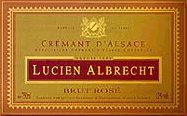 method from any of the Alsace grapes except Gewurztraminer and Chasselas, is an under-appreciated category of sparkling wine. As a category they are lighter and less complex than Champagne, but when talented producers, such as Albrecht, make them, they deliver considerable pleasure. … Read more
method from any of the Alsace grapes except Gewurztraminer and Chasselas, is an under-appreciated category of sparkling wine. As a category they are lighter and less complex than Champagne, but when talented producers, such as Albrecht, make them, they deliver considerable pleasure. … Read more
Chateau Ste. Michelle, Columbia Valley (Washington) Dry Riesling 2009
($9): This wine is an incredible bargain. A subtle stone fruit–peach or nectarine–character comes through and harmonizes with a gentle lemony acidity. Not aggressively dry, a hint of roundness balances Riesling’s inherent acidity. The style allows you to enjoy a glass as an aperitif and then carry it to the table to accompany a wide variety of dishes from chicken in a mushroomy cream sauce to a garlic-infused seafood stew. … Read more
Dr. Konstantin Frank, Finger Lakes (New York) Riesling Dry 2008
($15): 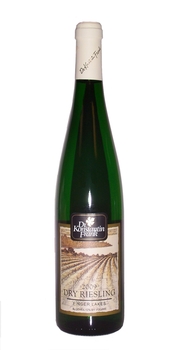 Many people are surprised to hear that New York produces world-class wines. But the Finger Lakes region is home to some of this country’s best Rieslings. And Dr. Konstantin Frank’s rank among the top. Dr. Frank, in the 1950s, figured out that vineyards planted on the shores of these deep-water lakes would benefit from the lakes’ moderating influences, which would prevent the vines from freezing during the harsh New York winter. … Read more
Many people are surprised to hear that New York produces world-class wines. But the Finger Lakes region is home to some of this country’s best Rieslings. And Dr. Konstantin Frank’s rank among the top. Dr. Frank, in the 1950s, figured out that vineyards planted on the shores of these deep-water lakes would benefit from the lakes’ moderating influences, which would prevent the vines from freezing during the harsh New York winter. … Read more
Gerard Boulay, Sancerre (Loire Valley, France) “Les Monts Damnes” 2008
($41, Premium Wine Co.): 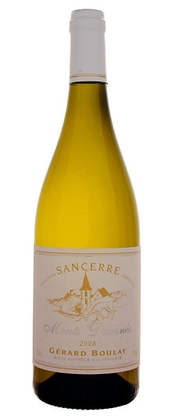 Les Monts Damnes (literally, damned mountains), so named because of the steepness of the slope, is one of the best sites in Sancerre and would be categorized as Grand Cru if that system existed in the appellation. … Read more
Les Monts Damnes (literally, damned mountains), so named because of the steepness of the slope, is one of the best sites in Sancerre and would be categorized as Grand Cru if that system existed in the appellation. … Read more
Domaine Duret, Quincy (Loire Valley, France) 2009
($13, Fruit of the Vine): Quincy is a tiny (400-acre) appellation west of Sancerre where regulations mandate Sauvignon Blanc for white wines just as in Sancerre. This wine speaks more of the grape with zesty citrus flavors than underlying minerality, but it is easy to recommend with raw or simply prepared seafood, especially at this bargain price.… Read more
Philippe Rambeau, Pouilly-Fumé (Loire Valley, France) “Les Lumeaux” 2009
($20, Jean-Marie Dechamps): Despite the fume in its name, I don’t find smokey notes consistently in wines from Pouilly-Fumé. Benoît Roumet, the director of Les Vins du Centre Loire, says he often has difficulty distinguishing wines from Pouilly-Fumé from its across the river town of Sancerre since the soil in many spots on both sides of the river is similar. … Read more
Trimbach, Alsace (France) Riesling 2007
($17, Diageo Chateau & Estates): There’s no better Alsace producer than Trimbach. Founded in 1626 and still family owned, Trimbach makes Rieslings that remain among the benchmarks for Alsace. Based in Ribeauvillé, an especially good area for Riesling, they produce this wine from a combination of their grapes and ones purchased from growers in the surrounding villages. … Read more
Trimbach, Alsace (France) Riesling ‘Cuvee Frederic Emile’ 2002
($60, Diageo Chateau & Estates): 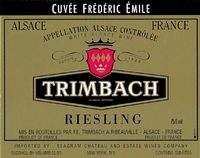 Trimbach, like other leading Alsace producers, Hugel and Beyer, eschews the Alsace Grand Cru classification system of vineyards, insisting that when the boundaries were drawn they included inferior sites. Hence, even though the grapes for this wine come exclusively from the core of the Grand Cru sites of Geisberg and Osterberg, on the steep slope directly behind their winery, Grand Cru does not appear on the label. … Read more
Trimbach, like other leading Alsace producers, Hugel and Beyer, eschews the Alsace Grand Cru classification system of vineyards, insisting that when the boundaries were drawn they included inferior sites. Hence, even though the grapes for this wine come exclusively from the core of the Grand Cru sites of Geisberg and Osterberg, on the steep slope directly behind their winery, Grand Cru does not appear on the label. … Read more
Trimbach, Alsace (France) Riesling Clos Ste Hune 2001
($150, Diageo Chateau & Estates): The Clos Sainte Hune is a small parcel within the Grand Cru Rosacker vineyard in the village of Hunawihr that has been owned exclusively by the Trimbach family for more than 200 years. In the Trimbach tradition, the label will never carry its Grand Cru designation despite the grandeur of the wine, which many authorities believe is Alsace’s finest. … Read more
Finca Allende, Rioja (Spain) 2005
($23, Jorge Ordonez): Rioja, like many wine areas around the world, is home to producers who are breaking from tradition. Miguel Angel De Gregorio, the winemaker at Finca Allende, eschews the traditional Rioja nomenclature of Crianza or Reserva, but still embraces the indigenous grapes, mainly Tempranillo, to make this bold wine. … Read more
Baron de Ley, Rioja (Spain) Gran Reserva 2001
($49, Frederick Wildman): Baron de Ley, whose first vintage was 1990, has already shown its talent at combining the “traditional” and the “modern” in Rioja. Instead of the common practice of purchasing grapes from neighbors to supplement their supply, they adopted the Bordeaux chateau model of using only their own fruit. … Read more
Finca Allende, Rioja (Spain) Calvario 2004
($85, Jorge Ordonez): This, Finca Allende’s top wine and a traditional blend of Tempranillo (85%) and Graciano, comes from a single vineyard—the highest elevation in the town of Briones—that was planted in 1945. The combination of elevation and old vines explains its extraordinary complexity. … Read more
Weingut Josef Leitz, Rudesheimer Berg Schlossberg (Rheingau, Germany) Riesling Trocken Alte Reben 2009
($43, Michael Skurnik): Count me among those who love the detail of the German wine label. They may be long, but like this one, it tells you what you want to know before you pull the cork. The shortcut, of course, which works in this instance, is to just remember the producer. … Read more
Maison Joseph Drouhin, Chablis Grand Cru (Burgundy, France) Vaudésir 2008
($65, Dreyfus, Ashby & Co.):  Laurent Drouhin, one of the principals of the house, says that his father believes the 2008 Chablis are the “best of his lifetime,” because of the ideal weather during the growing season and their biodynamic farming. … Read more
Laurent Drouhin, one of the principals of the house, says that his father believes the 2008 Chablis are the “best of his lifetime,” because of the ideal weather during the growing season and their biodynamic farming. … Read more
Jean-François Merieau, Touraine (Loire Valley, France) “Les Arpents des Vaudons” 2009
($16, Jon-David Headrick Selections): This is the kind of wine that consumers are always searching for: one that over delivers for its appellation. The Touraine appellation pales in prestige to ones like Sancerre or Pouilly-Fumé, but, like wines from those areas, this wine delivers the appealing grapefruit-like bite of Sauvignon Blanc. … Read more
Domaine de Chatenôy, Ménétou-Salon (Loire Valley, France) 2008
($20, VOS Selections): Benoît Roumet, the director of Les Vins du Centre Loire, notes that it’s sometimes difficult to distinguish wines from adjoining appellations in the Loire because of overlapping and similar soils. That observation explains why wines from Ménétou-Salon, a small–just over 1,000 acres, not even a fifth the size of Sancerre–and less prestigious appellation, are a good alternative to Sancerre, especially when made by a talented producer such as this one. … Read more
Beronia, Rioja (Spain) Reserva 2004
($18, San Francisco Wine Exchange): I tasted this wine about two months ago at a large tasting of Rioja and then shared a bottle at dinner just recently. Among its peers at the tasting, it fell more into the “traditional” than “modern” style. … Read more
Andrew Will, Columbia Valley (Washington) Merlot 2008
($24): 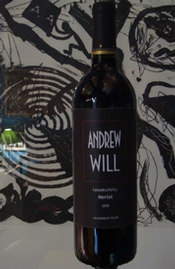 Chris Camarda, winemaker at Andrew Will, states (not entirely objectively of course) that “This is the best Merlot for the price on the market today.” After tasting it, it’s hard to disagree. The economic recession has had its effect, forcing him to cut production of higher priced wines, to funnel some of those grapes into lower tier wines and to cut prices drastically. … Read more
Chris Camarda, winemaker at Andrew Will, states (not entirely objectively of course) that “This is the best Merlot for the price on the market today.” After tasting it, it’s hard to disagree. The economic recession has had its effect, forcing him to cut production of higher priced wines, to funnel some of those grapes into lower tier wines and to cut prices drastically. … Read more
Andrew Will, Horse Heaven Hills (Washington) “Sorella” 2007
($65): This Bordeaux-style blend of Cabernet Sauvignon (72%), Cabernet Franc (15%), Merlot (10%) and Petit Verdot, all from the Champoux vineyard, represents this producer’s best wine. With suave ripe black fruit and toasty notes, it’s a gorgeous combination of refinement and power. … Read more
Domaine Tempier, Bandol (Provence, France) “La Tourtine” 2007
($75, Kermit Lynch): The only question I have about this wine is whether it’s their best ever. Domaine Tempier is on everyone’s short list of Bandol’s finest producers. Their La Tourtine bottling comes from a vineyard on the slopes of the property. … Read more
Montgras, Colchagua Valley (Chile) Carménère Reserva 2009
($12, Palm Bay International): Carménère is rapidly becoming Chile’s signature grape and wine. Long confused with Merlot, once the winemakers realized it was not and that it needed extra time to ripen, they started making intriguing wines from it. Montgras’ has a lovely array of leafy notes intertwined with fresh red fruit and a whiff of oak. … Read more
El Portillo, Uco Valley (Mendoza, Argentina) Malbec 2009
($9, Palm Bay International): Malbec, a grape and wine that Argentina is seizing as its own, is “hot.” And with popularity often comes mediocrity in the wine world. But El Portillo manages to pull it off with this bargain-priced example. With surprisingly good character, this Malbec conveys smoky, gamey elements in addition to the expected deep black fruit flavors. … Read more
“hot.” And with popularity often comes mediocrity in the wine world. But El Portillo manages to pull it off with this bargain-priced example. With surprisingly good character, this Malbec conveys smoky, gamey elements in addition to the expected deep black fruit flavors. … Read more
Bodegas Montecillo, Rioja (Spain) Reserva 2003
($18, Underdog Wine Merchants): The 2003 vintage in Europe was plagued by heat often resulting in over-ripe or baked elements in the wines. Not this one. Fresh and lively, it has uplifting acidity and class that amplifies the wonderful complex combination of fruit and spice. … Read more
Telmo Rodriguez, Rioja (Spain) “LZ” 2008
($15, Vintus): Telmo Rodriguez is one of the “new wave” Spanish winemakers. His family owns the highly regarded Rioja estate, Remurelli, and although he left that estate in the 1990s and set off on his own, he is familiar and at home with making Rioja. … Read more
Remírez de Ganuza, Rioja (Spain) “Fincas de Ganuza Reserva” 2003
($54, Fines Estates from Spain): Remirez de Ganuza is one of the star producers of Rioja. This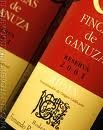 bottling, the Fincas de Ganuza, is his second wine, which makes its quality all the more remarkable. A blend of old vine Tempranillo and Garnacha, it has power, dark minerality–almost tarry element–and an appealing meaty element offset by lovely freshness. … Read more
bottling, the Fincas de Ganuza, is his second wine, which makes its quality all the more remarkable. A blend of old vine Tempranillo and Garnacha, it has power, dark minerality–almost tarry element–and an appealing meaty element offset by lovely freshness. … Read more
Domaine Lucien Boillot, Gevrey-Chambertin Premier Cru (Burgundy, France) Les Cherbaudes 2006
($85, Kermit Lynch): Although the Les Cherbaudes vineyard has good neighbors, adjacent to the Grand Cru Chapelle-Chambertin and just down the hill from Grand Crus Chambertin-Clos de Beze and Mazis-Chambertin, it lacks the prestige of Gevrey’s best Premier Crus, Clos St.… Read more
Bodegas Montecillo, Rioja (Spain) Crianza 2006
($9, Underdog Wine Merchants): 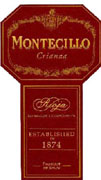 A more enjoyable $9 wine? I doubt it. Made entirely from Tempranillo–the winemaker, Maria Martinez Sierra, is known locally as “Mrs. Tempranillo”–this traditional mid-weight Rioja delivers a lovely and nicely balanced combination of spice and fruit. Fresh and bright, it has surprising class for a wine of this price.… Read more
A more enjoyable $9 wine? I doubt it. Made entirely from Tempranillo–the winemaker, Maria Martinez Sierra, is known locally as “Mrs. Tempranillo”–this traditional mid-weight Rioja delivers a lovely and nicely balanced combination of spice and fruit. Fresh and bright, it has surprising class for a wine of this price.… Read more
Lucien Boillot, Bourgogne Rouge (Burgundy, France) 2006
($25, Kermit Lynch): Consumers tend to ignore the 2006 vintage for red Burgundy because it followed–and was overshadowed by–the sensational 2005 vintage. It’s too bad because many fine wines, such as this one, were made that year. Though from a “lowly” Bourgogne Rouge appellation, the wine delivers more than the appellation suggests because it was made by a talented producer using only his–not purchased–grapes. … Read more
Remelluri, Rioja (Spain) 2004
($45, Fine Estates from Spain): Remelluri, a star producer in the region, claims to be the oldest and first estate to bottle Rioja. A typical Rioja blend of mostly (80%) Tempranillo, with small amounts of Graciano, Garnacha and Mazuelo, this wine comes entirely from the estate’s vineyards. … Read more
Palacios Remondo, Rioja (Spain) “La Montesa” 2006
($22, Folio Wine Company): After his father died in 2000, Alvaro Palacios, one of the current superstars of Spanish wine, returned to run the family estate in Rioja. He replanted the vineyard, modernized the cellar and discarded the traditional nomenclature of Crianza, Reserva and Gran Reserva, terms that indicate the duration of aging prior to the wine’s release. … Read more
Bodegas Muga, Rioja (Spain) “Prado Enea” Gran Reserva 2000
($53, Jorge Ordonez): Consumers wishing to drink wines with mature character without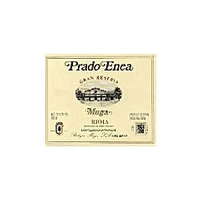 spending a fortune at auction or stocking their own wine cellar can head to their local retailer and pull this one off the shelf. Gran Reserva designation in Rioja means the wine was aged a minimum of 5 years prior to release. … Read more
spending a fortune at auction or stocking their own wine cellar can head to their local retailer and pull this one off the shelf. Gran Reserva designation in Rioja means the wine was aged a minimum of 5 years prior to release. … Read more
Marcel Lapierre, Vin de France (France) “Raisins Gaulois Gamay IX” NV
($14, Kermit Lynch): Marcel Lapierre, an excellent Morgon producer, has high standards. He believes that his “young” Gamay vines, those under 30 years old–most New World producers consider 30-year old vines “old”–do not produce suitable fruit for his Morgon, so he bottles wine made from those vines under the new appellation called Vin de France. … Read more
Marcel Lapierre, Vin de France (France) “Raisins Gaulois Gamay IX” NV
($14, Kermit Lynch): Marcel Lapierre, an excellent Morgon producer, has high standards. He believes that his “young” Gamay vines, those under 30 years old–most New World producers consider 30-year old vines “old”–do not produce suitable fruit for his Morgon, so he bottles wine made from those vines under the new appellation called Vin de France. … Read more
Domaine Ostertag, Alsace (France) Pinot Blanc “Barriques” 2008
($20, Kermit Lynch): The word “barriques” (small, 225-liter French oak barrels) on a label of Pinot Blanc, a fairly delicate grape, is bound to dissuade many from tasting this wine. It certainly put me off and I had every intention of not liking the wine. … Read more
Guigal, Côtes du Rhône (Rhône Valley, France) Blanc 2008
($14, Ex Cellars Wine Agency): Although the vast amount of wine produced in the Rhone Valley is red, consumers should explore the small amount of white wines that originates there because they offer richness and body. The only potential downside of Rhône whites, which Guigal avoids, is that they can come across as heavy if they have insufficient acidity. … Read more
Gai’a, Santorini (Greece) “Thalassitis” 2008
($26, Athenee Importers):  In the brief 15 years since its founding in 1994, Gai’a has become one of Greece’s top producers. Their Thalassitis, made entirely from the Assyrtiko grape, is clean and bracing with a lava-infused minerality. It has a lovely firmness and incredible persistence and intensity without being heavy. … Read more
In the brief 15 years since its founding in 1994, Gai’a has become one of Greece’s top producers. Their Thalassitis, made entirely from the Assyrtiko grape, is clean and bracing with a lava-infused minerality. It has a lovely firmness and incredible persistence and intensity without being heavy. … Read more
Gai’a, Greece (Greece) “14-18 H” Rosé 2009
($14, Athenee Importers): Although made entirely from Agiorgitiko, one of Greece’s prestige grapes, grown in Nemea, one of Greece’s prime wine producing areas, this carries no appellation because regulations only recognize red wines from Nemea, not rosé. After tasting this wine, it’s pretty clear that those regulations need to change. … Read more
Capçanes, Montsant (Catalonia, Spain) “Vall del Calàs” 2006
($20, Eric Solomon Selections): Capçanes ranks with the best wine cooperatives in the world. Working with growers whose vineyards have been in the same family for generations gives them access to old vines. This blend of Merlot (50%), Garnacha (35%) and Tempranillo combines lively fruity with earthy–leafy–flavors.… Read more
